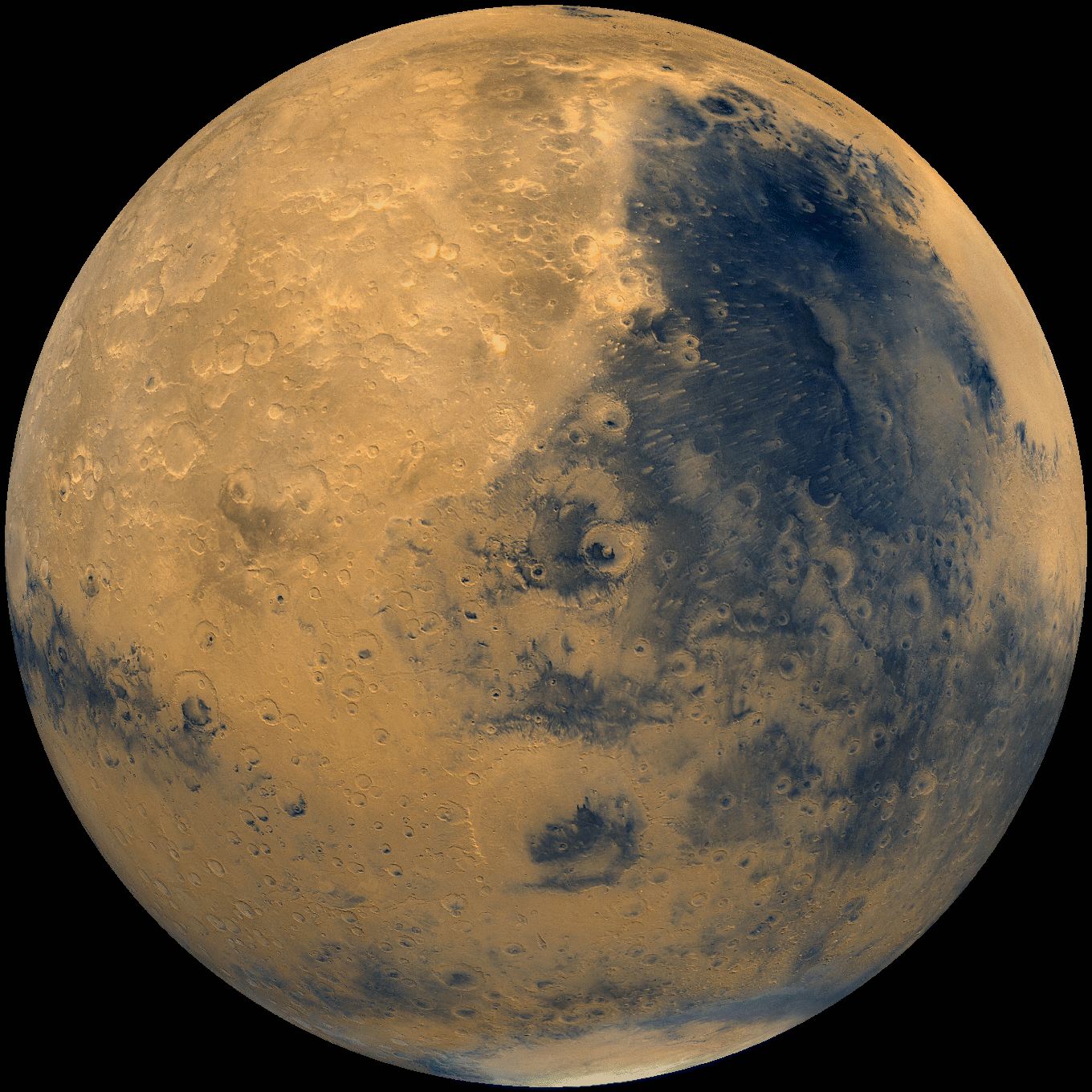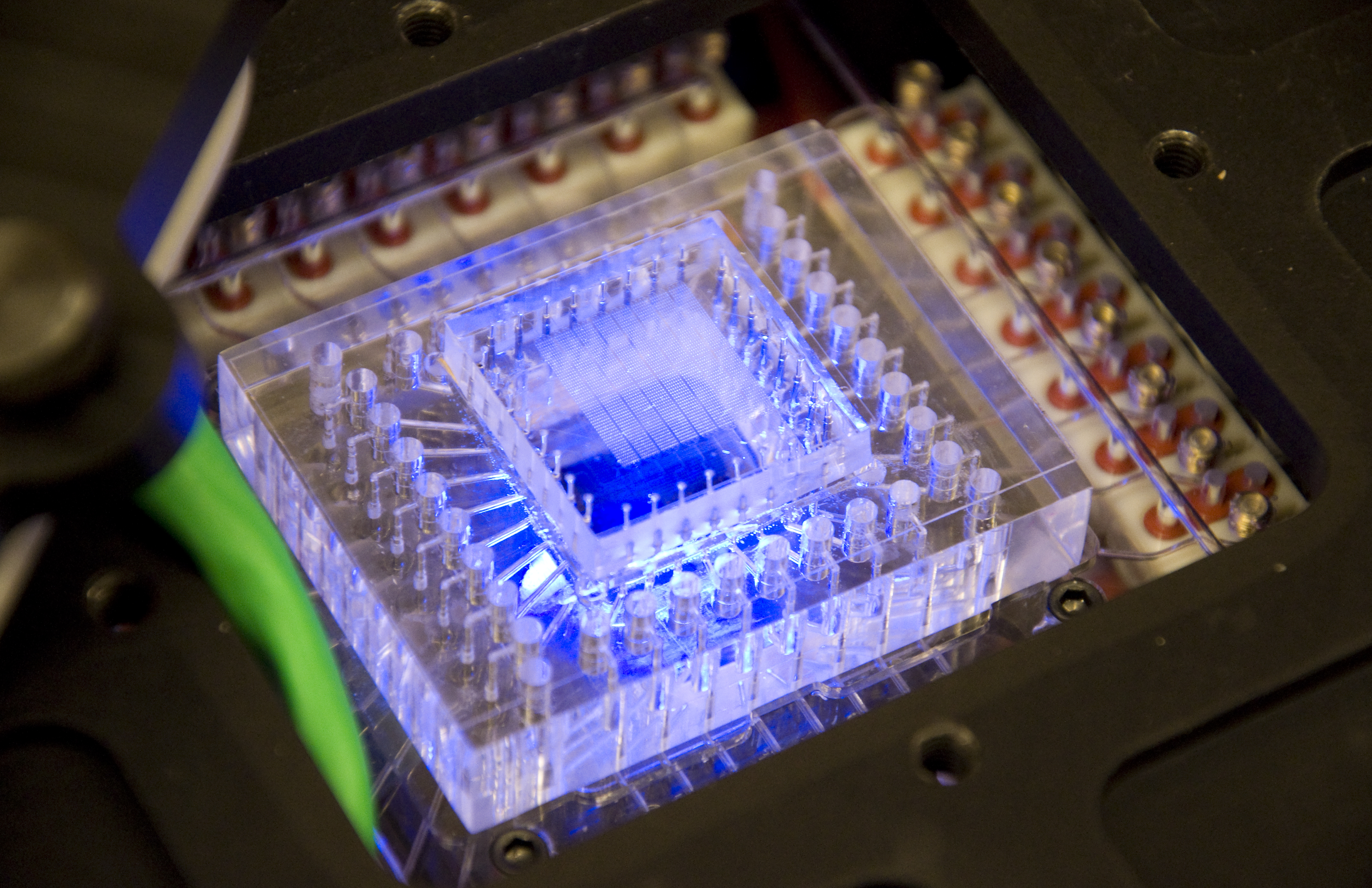Are Earthlings From Mars? New Tool May Reveal Your Alien Ancestry

This story was updated at 6:50 p.m. EDT.
It's possible that the family tree of all life on Earth has its roots on Mars — and a new device could put that theory to the test in a few years, researchers say.
Researchers are developing an instrument that would search through samples of Martian dirt, isolating any genetic material from microbes that might be present — bugs that are living or that died relatively recently, within the last million years or so. Scientists could then use standard biochemical techniques to analyze any resulting genetic sequences, comparing them to what we find on Earth.
"It’s a long shot,” said MIT researcher Chris Carr, who's working on the life-detecting device, in a statement. "But if we go to Mars and find life that’s related to us, we could have originated on Mars. Or if it started here, it could have been transferred to Mars." [5 Bold Claims of Alien Life]
Either way, Carr added, "we could be related to life on Mars. So we should at least be looking for life on Mars that’s related to us."
Ancient Martian life?
The idea that all Earth life could be descended from Martian organisms may not be fully mainstream — but it's not too crazy to consider, either. While the Martian surface appears to be cold, dry and lifeless today, there is plenty of evidence that the planet was much warmer and wetter in the distant past, billions of years ago.
Breaking space news, the latest updates on rocket launches, skywatching events and more!
Here on Earth, life almost invariably occupies any niche that contains liquid water. So ancient Mars may have once supported some form of life — perhaps even before Earth did, researchers said.
If that's the case, these Mars microbes may have colonized Earth, zipping through interplanetary space aboard rocks blasted off the Martian surface by asteroid impacts. An estimated 1 billion tons of Martian rock have made this journey over the years, researchers said.
And microbes are incredibly hardy, so it's possible that some bugs could have survived the asteroid impact and the trip through space to a new planet, they added. Orbital dynamics show that it's about 100 times easier for rocks to travel from Mars to Earth than the other way around, Carr said.
So if life got started on Mars first, it's possible that every living thing on Earth can trace its lineage back to a Martian.
"It is not implausible that life on Mars will be related to life on Earth and therefore share a common genetics," said astrobiologist Chris McKay of NASA's Ames Research Center in Moffett Field, Calif. "In any case, it would be important to test this hypothesis."
Digging through Martian dirt
The proposed instrument, being developed by researchers at MIT and Harvard, aims to do just that. The device — known as the Search for Extra-Terrestrial Genomes, or SETG — would take a sample of Martian soil and process it to separate out any possible organisms, living or dead (within the last million years or so).
While finding anything on the Martian surface might be a long shot, digging a little deeper could bear fruit; researchers have found evidence over the years that liquid water may lurk underground. [Video: The Changing Face of Mars]
Also, subterranean environments are more protected from the harmful ultraviolet radiation bombarding the Martian surface, making life more likely to survive underground.
"We think it's much less likely that we would find something on the surface or in the top centimeters than if we went down a meter or more," Carr told SPACE.com. "The deeper we could go on Mars, the better."
So samples could be dredged up by a rover equipped with a deep drill. If any life-forms are present in the dirt, the SETG would amplify their DNA or RNA, then search for genetic sequences that are common in Earth organisms. Such analysis might be able to tell researchers how closely related any possible Martians are to us.
This would all be done on the Martian surface, without the need to lug dirt back to Earth, Carr said.
"But I would argue that it would sure be interesting to return samples if we found something," he added.
The work is worth doing to better understand the origin and evolution of life on Earth, researchers said. But there are other, more practical reasons to look at the DNA of any potential Martians, too.
NASA and other space agencies, for example, would want to how much of a disease risk Martian organisms might pose to future astronauts.
"From an astronaut health and safety point of view and from a return-sample point of view, there is more to worry about” if there are organisms closely related to us on Mars, McKay said. For example, microbes that are similar to us are much more likely to have the chance to be infectious than totally alien organisms would be.
The SETG could also help detect biological contamination that spacecraft may have brought to Mars from Earth, Carr said.
The researchers presented a summary of their proposed life-detecting instrument earlier this month at the IEEE Aerospace Conference in Big Sky, Mont.
A few years away
The SETG is not yet ready to catch a rocket to Mars. A working version of the instrument will need to do three things: isolate biological material, amplify and detect DNA and then sequence it. Researchers have built a prototype instrument, about the size of a shoebox, that can perform the middle step, Carr said.
They're working on adding the other two capabilities, and a fully functional prototype could be ready to go pretty soon.
"The goal is to have that system in two years, and then to put it through its paces in some challenging environments," Carr said.
Such environments could include Antarctica or Chile's Atacama Desert, Carr added. If the SETG passes its Martian-analog tests, the next step would be building a flight-ready instrument. If all goes well, that could happen by 2018 or so.
That timeline could make the SETG a candidate instrument for two rover missions slated to launch around 2018 — the European-led ExoMars and NASA's Mars Astrobiology Explorer-Cacher (MAX-C). Both the ExoMars and MAX-C rovers will sport drills capable of getting at least a meter under the Martian surface.
Carr said such missions would be good fits for the SETG, but he stressed that the instrument hasn't been selected for any Mars mission as of yet.
Ramping up the search for Martian life
If the SETG does get incorporated into a Mars mission, it would mark the first time that an instrument made its way to the Red Planet specifically to look for life since 1976, when NASA's twin Viking landers found tantalizing, but ambiguous, results.
An instrument aboard NASA's Mars Science Laboratory rover— also known as Curiosity — will investigate chemistry relevant to life when it arrives on the Red Planet in August 2012. The SETG, by contrast, directly addresses Earth-like molecular biology.
The SETG could someday have applications aside from searching for life on Mars, Carr said. For example, the tool could one day help astronauts diagnose infections in space and monitor their environments. But he hopes the instrument gets a chance to show its stuff on the Red Planet.
"Mars may or may not have life," Carr said. "If it does, we think there's a chance it could be related to us. If in fact it is, we want to find it."
You can follow SPACE.com senior writer Mike Wall on Twitter: @michaeldwall. Follow SPACE.com for the latest in space science and exploration news on Twitter @Spacedotcom and on Facebook.

Michael Wall is a Senior Space Writer with Space.com and joined the team in 2010. He primarily covers exoplanets, spaceflight and military space, but has been known to dabble in the space art beat. His book about the search for alien life, "Out There," was published on Nov. 13, 2018. Before becoming a science writer, Michael worked as a herpetologist and wildlife biologist. He has a Ph.D. in evolutionary biology from the University of Sydney, Australia, a bachelor's degree from the University of Arizona, and a graduate certificate in science writing from the University of California, Santa Cruz. To find out what his latest project is, you can follow Michael on Twitter.

